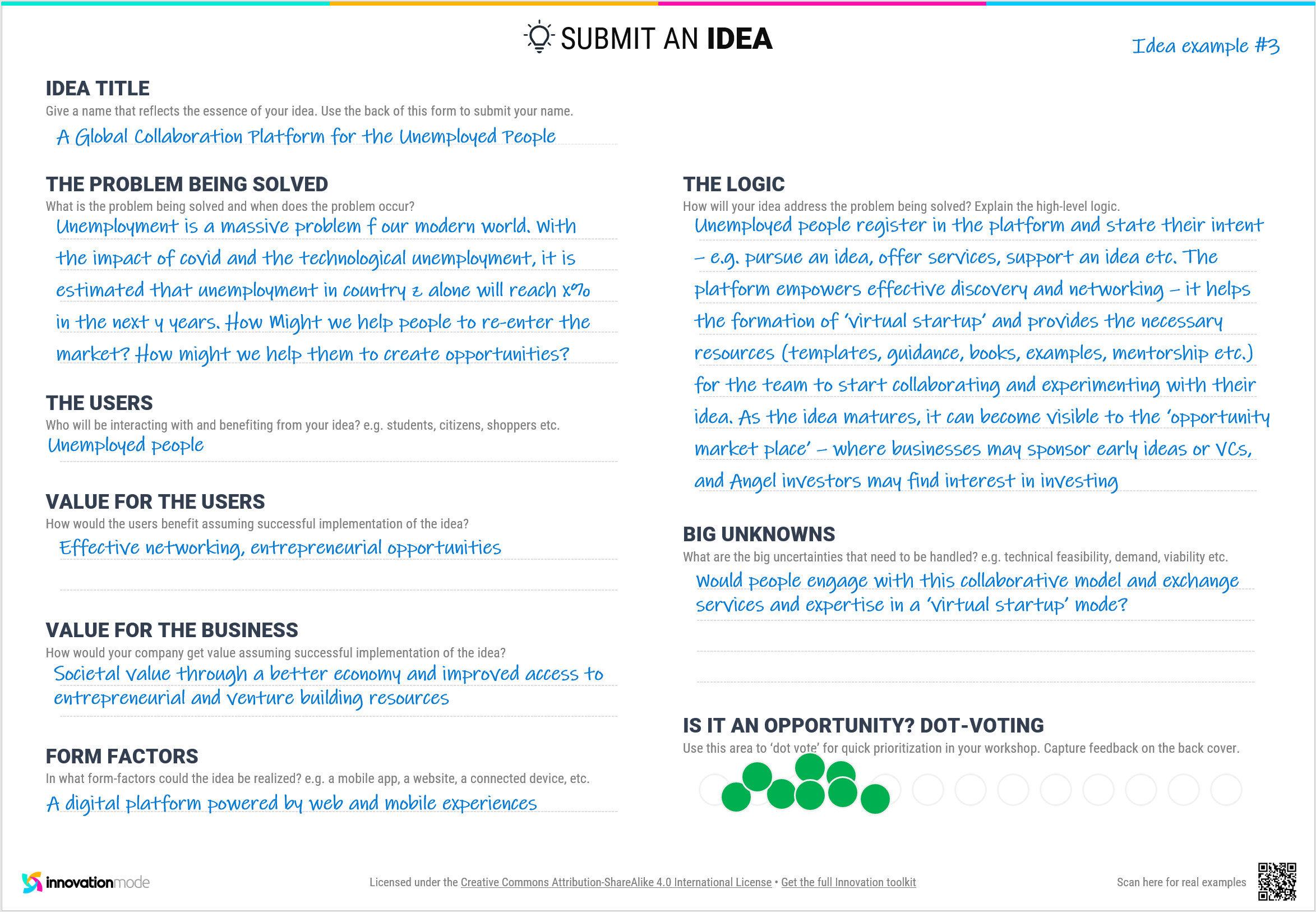
Brainstorming Workshop Tools: Enhance Creativity and Drive Innovation
Unlock the full potential of your team's creativity with our powerful brainstorming workshop tools. Designed to facilitate structured ideation, these tools help you generate, organize, and refine ideas, turning creative sessions into innovation powerhouses. Equip your team to brainstorm effectively and produce breakthrough solutions.
The Problem Framing Template
Addressing Misalignment in Ideation and Brainstorming Sessions
One of the biggest challenges in brainstorming sessions is the tendency to jump to solutions without fully understanding the problem. Often, teams overlook the root cause, affected users, and key stakeholders, leading to misaligned and ineffective ideas.
By structuring the problem description on a single page, teams can focus their ideation on solving clearly defined issues. A well-crafted problem statement brings clarity and alignment, accelerates brainstorming, and significantly improves the quality and relevance of the ideas generated."
Use this template to define the problem and share it with your brainstorming participants upfront. This will help them understand:
The Environment in which the business problem exists - the ecosystem, the market forces, the key ‘players’, the impacted users, and the entities that have an associated vested interest.
The ‘Dynamics’ of the problem - its past, present, and future, e.g. when it first appeared and how fast it has grown in terms of impacted entities. Or, the expected growth, known attempts to address it, etc.
The ‘Current state’ of the problem - its symptoms and impact, and how the involved parties experience it. This can also cover the identified or plausible root cause of the problem and the conditions or events that explain or trigger it.
The ‘Ideal state’, that is, how success would look like if the problem was ‘magically’ solved and how the involved parties would benefit.
Click & download the problem template (pdf) or buy the complete innovation toolkit (also contains the editable file of this problem statement)
The Business Idea Template
Standardize and Streamline Idea Communication with a Consistent Format
Simplify the way ideas are shared, discovered, and consumed with a compact, standardized format. This approach makes it easier and faster to communicate innovative concepts across teams and departments.
During brainstorming and ideation sessions, innovators often struggle to clearly express their ideas. This streamlined form helps teams quickly articulate draft ideas in a consistent way, making collaboration more efficient and ensuring ideas are easily understood and shared within and across team
The 'Idea form' can be used independently by ideators or as part of structured ideation and brainstorming events. It sets the basis for an 'innovation language' for the company - the means of exchanging ideas in a more effective way. It helps ideators to think deeply about the following aspects:
The problem to be solved - the situation and context in which the idea could provide value.
The users or customers impacted by the problem being solved; the ways users will get value from the idea; the ways the company would get value; the ‘Form Factors’ - the shape that the idea could take if implemented - e.g. a mobile app or a website.
The ‘Logic’ of the idea - how it solves the problem.
The ‘Big Unknowns’ regarding the idea - the identified sources of uncertainty and the big questions that need to be answered.
Click below to download the idea template (pdf) or buy the complete innovation toolkit (includes the editable file of this idea template)
How to Set Up a Successful Brainstorming
Run Productive Brainstorming Sessions with the Right Tools and Preparation
Inspiring your team is only the first step to a successful brainstorming session. To truly unlock their potential, you need to provide the right resources, tools, and clear guidance.
Even if you have the best talent—ideators, domain experts, scientists, and creatives—without proper context and preparation, the session may produce noise rather than valuable ideas. Use this template to ensure your team is focused, aligned, and ready to generate impactful solutions.
How to Prepare for an Effective Brainstorming Session
Refer to the problem statement (see Template #1 above) in clear, simple language.
Clearly explain the motivation behind the brainstorming session and the desired outcomes. Avoid jargon or technical terms—concise communication is key.
Select the right participants—experts from relevant fields and recognized creative thinkers. It's equally important to include fresh perspectives: team members who are not directly involved in the problem but can offer an outside viewpoint, often sparking innovative solutions. Keep the group small, ideally between 4-8 participants, for maximum productivity.
Provide participants with inspirational content and resources to stimulate creative thinking during the session.
Establish clear rules and guidelines, such as no devices during brainstorming, communication best practices, and criteria for evaluating ideas.
Summarize all this information on a single page and distribute it to invitees in advance to ensure they are well-prepared and aligned with the session’s goals.
Inspire, Share, Innovate
Click to download the workshop template (.docx) - check also the complete innovation toolkit with a collection of ten innovation templates



